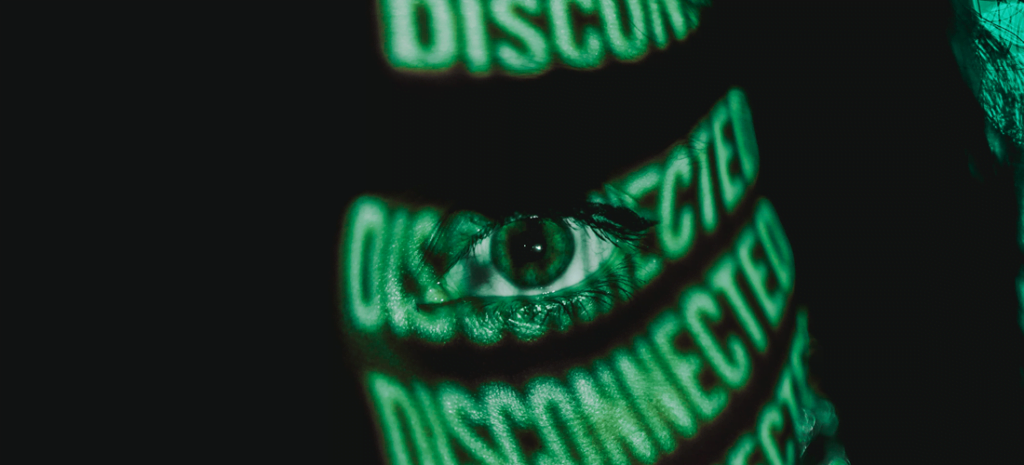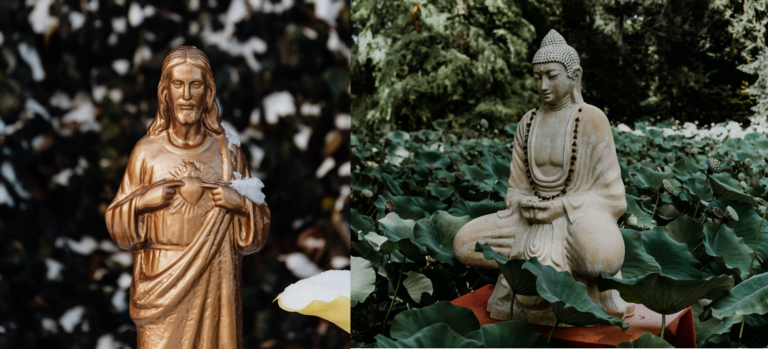Life today is faster, louder, and more connected than ever before, and while this interconnectedness has its perks, it can often amplify feelings of anxiety. It is in moments of solitude that we find an oasis, a safe haven where we can navigate the tumultuous seas of our emotions.
Let’s explore various anxiety management techniques that leverage the power of solitude, helping you find calm in the chaos and transforming solitude from a state of being alone to a state of enriching self-discovery. Stay with us on this journey of self-care and mental wellbeing.
Managing anxiety is paramount for maintaining a balanced, fulfilling life. Anxiety, when left unchecked, can have debilitating effects on our physical health, mental wellbeing, and overall quality of life. It can disrupt sleep patterns, cause heart palpitations, and lead to a constant state of worry and distress.
Anxiety often results in a sense of isolation as individuals may withdraw from social interactions to avoid triggers. Hence, effective anxiety management is essential. It facilitates the cultivation of coping mechanisms to navigate stressful situations and fosters resilience. Most importantly, managing anxiety can pave the way for enhanced personal growth and a happier existence, making solitude a time for self-reflection and peace, rather than a period of relentless worry.
Solitude plays a transformative role in anxiety management, serving as a tool for self-reflection, grounding, and healing. As an intentional practice, it allows individuals to disconnect from external stimulation and focus inward, promoting an intrinsic understanding of one’s emotional state. This conscious separation aids in identifying triggers, regulating emotions, and cultivating strategies to effectively manage anxiety. Therefore, solitude can be a powerful ally in the journey towards mental wellness and anxiety management.
Anxiety and Its Impact
Anxiety is a common mental health disorder characterized by excessive, prolonged feelings of worry and fear about everyday situations. It manifests through various physical and psychological symptoms such as insomnia, restlessness, and an increased heart rate. Globally, it’s estimated that 284 million people experienced an anxiety disorder in 2017, making it the most prevalent mental health or neurodevelopmental disorder. It affects people of all ages and from all walks of life, emphasizing the necessity for efficient anxiety management strategies.
Unmanaged anxiety can have profound effects on both physical and mental health. Physically, chronic anxiety can manifest in symptoms like insomnia, headaches, high blood pressure, or gastrointestinal issues. Mentally, it can disrupt cognitive functioning, causing difficulties in concentration, decision-making, and memory. Over time, this might lead to the development of other psychological conditions such as depression. Moreover, in the pursuit of solitude as a means to manage anxiety, individuals may isolate themselves, potentially exacerbating feelings of loneliness and distress.
Holistic anxiety management techniques have become increasingly important in our fast-paced, high-stress society. Anxiety, if not managed effectively, can negatively impact our overall well-being, affecting our physical health, mental state, relationships, and productivity. Solitude, often overlooked, is a powerful tool in this regard. By consciously spending time alone, we give ourselves the space to relax, introspect, and recharge. It’s a moment to step away from external pressures and reconnect with our inner selves, promoting mental calmness. Thus, a holistic approach to anxiety management, embracing strategies such as regular exercise, mindfulness, balanced diet, adequate sleep, and periods of solitude, is crucial for maintaining and enhancing our overall health and well-being.
The Connection Between Solitude and Anxiety Management
Solitude can serve as a powerful tool for managing anxiety, providing a space for introspection, self-discovery, and self-care. When we spend time alone, free from external noise and distractions, we can focus on our thoughts and feelings, gaining deep insights into our anxiety triggers. This mindful introspection allows us to develop personalized strategies for anxiety management, such as deep breathing, meditation, or cognitive restructuring. Furthermore, solitude often leads to a greater appreciation of the present moment, helping to mitigate the future-focused worries that characterize anxiety. Lastly, solitude promotes self-compassion, as we learn to validate our feelings and experiences, rather than judging ourselves harshly or comparing our lives to others.
Solitude offers a unique space for self-reflection and self-discovery, essential elements in the journey towards managing anxiety. When alone, unbounded by external influences or expectations, one can deeply introspect, leading to a better understanding of oneself. This self-awareness is crucial for identifying triggers and patterns of anxiety. Moreover, being in solitude allows one to focus on personal thoughts, behaviors, and feelings, which is an opportunity for self-improvement. Consequently, self-discovery in solitude can facilitate the development of effective strategies for managing anxiety, fostering a healthier mental state.
Solitude-Based Anxiety Management Techniques
Solitude can be a powerful tool for managing anxiety. It provides a calm and introspective space where individuals can reflect, recharge, and develop strategies to cope with anxiety. Here are some solitude-based anxiety management techniques along with discussions on their effectiveness:
Mindfulness Meditation
- What it is: Mindfulness meditation involves paying focused attention to the present moment without judgment.
- How it works: In solitude, individuals can practice mindfulness by concentrating on their breath, bodily sensations, or a specific point of focus. This helps reduce anxiety by grounding the mind and decreasing rumination.
- Effectiveness: Numerous studies have shown that mindfulness meditation can reduce symptoms of anxiety and improve overall mental well-being.
Journaling and Self-Reflection
- What it is: Journaling involves writing down thoughts, feelings, and experiences.
- How it works: In solitude, individuals can engage in journaling as a means of self-expression and reflection. This can help identify anxiety triggers, process emotions, and gain perspective on problems.
- Effectiveness: Journaling has been found to be a therapeutic tool for managing anxiety by promoting self-awareness and emotional regulation.
Nature Walks and Outdoor Solitude
- What it is: Spending time in natural settings away from the hustle and bustle of daily life.
- How it works: Being in nature, even for a short time, can reduce stress and anxiety. Solitude in a natural environment allows for relaxation, mindfulness, and connection with the environment.
- Effectiveness: Research suggests that exposure to nature can significantly improve mood and reduce symptoms of anxiety.
Creative Expression
- What it is: Engaging in creative activities such as art, writing, or music.
- How it works: Solitude provides the mental space for creative exploration and expression. Creativity can serve as an emotional outlet and a distraction from anxious thoughts.
- Effectiveness: Creative expression can be highly effective in reducing anxiety as it fosters a sense of accomplishment and allows individuals to channel their emotions in a constructive way.
Breathing Exercises
- What it is: Focused breathing techniques, such as diaphragmatic breathing or box breathing.
- How it works: Solitude allows for uninterrupted practice of breathing exercises, which can calm the body’s stress response and alleviate anxiety symptoms.
- Effectiveness: Deep breathing exercises are a quick and effective way to reduce anxiety, especially when practiced in solitude for maximum concentration.
Digital Detox
- What it is: Disconnecting from digital devices and screens.
- How it works: Solitude can be an excellent opportunity to unplug from the constant stimulation of technology, which can contribute to anxiety. It allows individuals to be present and reduce the anxiety associated with information overload.
- Effectiveness: A digital detox during solitude can lead to increased mental clarity and reduced anxiety related to social media and constant connectivity.
Progressive Muscle Relaxation
- What it is: A technique that involves tensing and then relaxing different muscle groups.
- How it works: In solitude, individuals can practice progressive muscle relaxation to release physical tension associated with anxiety.
- Effectiveness: This technique is proven to help reduce muscle tension and promote relaxation, which can alleviate anxiety symptoms.
It’s important to note that the effectiveness of these solitude-based anxiety management techniques can vary from person to person. What works best may depend on individual preferences and the specific nature of one’s anxiety. It’s often beneficial to experiment with different techniques and seek professional guidance when needed to develop a personalized anxiety management strategy.
Combining Solitude with Other Anxiety Management Strategies
A holistic approach to anxiety management is of utmost importance, recognizing that anxiety is not just a mental condition, but one that impacts every facet of an individual’s life. This approach focuses on the person as a whole rather than merely addressing the symptoms. One crucial aspect of holistic anxiety management is seeking solitude. Identifying quiet moments for self-reflection and mindfulness can significantly reduce anxiety levels and promote overall mental wellness. Moreover, the incorporation of solitude periods into daily routines provides an opportunity to better understand oneself, fostering a deeper connection between mind and body, which is critical in managing anxiety effectively.
Integrating solitude-based techniques alongside traditional therapeutic approaches, exercise, and stress reduction methods can dramatically improve anxiety management. When combined with therapy, these moments of solitude can become powerful tools for personal transformation. Therapists can guide individuals in using this time to process emotions, challenge negative thought patterns, and develop effective coping strategies. Complementing this with regular exercise, which is known to reduce stress hormones and stimulate the production of mood-enhancing endorphins, further amplifies the benefits. This holistic approach nurtures both physical and mental well-being, paving the way for comprehensive anxiety management.
Each individual’s experience with anxiety is unique, hence, the approach to managing it must be tailored to their specific needs and preferences. Solitude, for instance, can be highly beneficial for some. It provides a quiet space for introspection, reflection, and often leads to a deeper understanding of one’s emotions. This can significantly aid anxiety management. However, solitude may not be the right solution for everyone. Some individuals might find more comfort in sharing their experiences and feelings with others as a means of managing anxiety. Therefore, striking the right balance between solitude and other strategies, such as therapy or medication, is essential.
Overcoming Challenges
Practicing solitude-based anxiety management techniques can be highly effective, but individuals may encounter certain obstacles along the way. Here’s a list of common obstacles and strategies to overcome them:
Lack of Time
- Obstacle: Many people lead busy lives, making it challenging to find dedicated time for solitude-based practices.
- Solution: Prioritize self-care by scheduling regular blocks of solitude in your calendar. Even short daily sessions can be beneficial. Consider it an essential part of your routine.
Difficulty Being Alone
- Obstacle: Some individuals may find it uncomfortable or anxiety-inducing to be alone.
- Solution: Start with short periods of solitude and gradually extend them as you become more comfortable. Use guided meditation or mindfulness apps to ease into the practice. Seek support from a therapist or counselor if fear of solitude is a significant issue.
Distractions
- Obstacle: External distractions, such as noise or interruptions, can hinder the effectiveness of solitude-based practices.
- Solution: Choose a quiet, comfortable, and distraction-free space for your solitude sessions. Communicate your need for solitude to family or housemates, and establish boundaries during these times.
Lack of Motivation
- Obstacle: Maintaining consistency with solitude-based practices can be challenging when motivation wanes.
- Solution: Set specific, achievable goals for your solitude practice and remind yourself of the benefits you’ll gain from it. Join online communities or find an accountability partner who shares similar goals to stay motivated.
Inconsistent Results
- Obstacle: Some people may not experience immediate or consistent results from solitude-based techniques.
- Solution: Understand that the benefits of solitude may take time to manifest. Keep a journal to track your progress and note any subtle improvements in your anxiety levels. Patience and persistence are key.
Self-Criticism and Judgment
- Obstacle: Negative self-talk and self-criticism can undermine the effectiveness of solitude-based practices.
- Solution: Practice self-compassion and remind yourself that it’s okay to have distracting thoughts or moments of discomfort during solitude. Be gentle with yourself and focus on the process rather than perfection.
Social Pressure
- Obstacle: Social expectations or pressure from friends and family to be constantly connected can make it difficult to prioritize solitude.
- Solution: Communicate your need for solitude and anxiety management to your loved ones. Educate them about the benefits it brings to your mental well-being. Encourage them to respect your boundaries.
Overcommitment
- Obstacle: Being overcommitted to work, social obligations, or other responsibilities can leave little time for solitude.
- Solution: Assess your commitments and prioritize self-care. Learn to say “no” when necessary and set clear boundaries to create space for solitude and anxiety management.
Resistance to Change
- Obstacle: Some individuals may resist incorporating solitude-based practices into their routine due to a fear of change or discomfort with unfamiliar activities.
- Solution: Start with small, manageable changes and gradually expand your solitude-based practices. Experiment with different techniques to find what resonates with you best.
Seeking External Validation
- Obstacle: Relying on external validation or the approval of others can hinder self-directed solitude.
- Solution: Practice self-validation and cultivate a sense of self-worth independent of others’ opinions. Remember that solitude is a valuable tool for your personal growth and well-being.
Overcoming these obstacles may require time and effort, but with patience and a commitment to your mental health, you can develop a consistent and effective solitude-based anxiety management practice. If you find that these obstacles persist or significantly impact your daily life, consider seeking support from a therapist or counselor who can provide guidance and tailored strategies.
Conclusion
The practice of solitude serves as a powerful tool in managing anxiety. By intentionally carving out time for oneself, one is not only able to create a safe space to navigate through the complexities of their emotions, but also develop a deeper understanding of their own needs and responses. These moments of solitude can be embraced to practice different anxiety management techniques, such as deep breathing, mindfulness, or progressive muscle relaxation. Remember, every individual’s journey with anxiety is unique, and it’s important to find the balance and techniques that work best for you. Embrace solitude not as a moment of loneliness, but as an opportunity for self-discovery and self-care.













